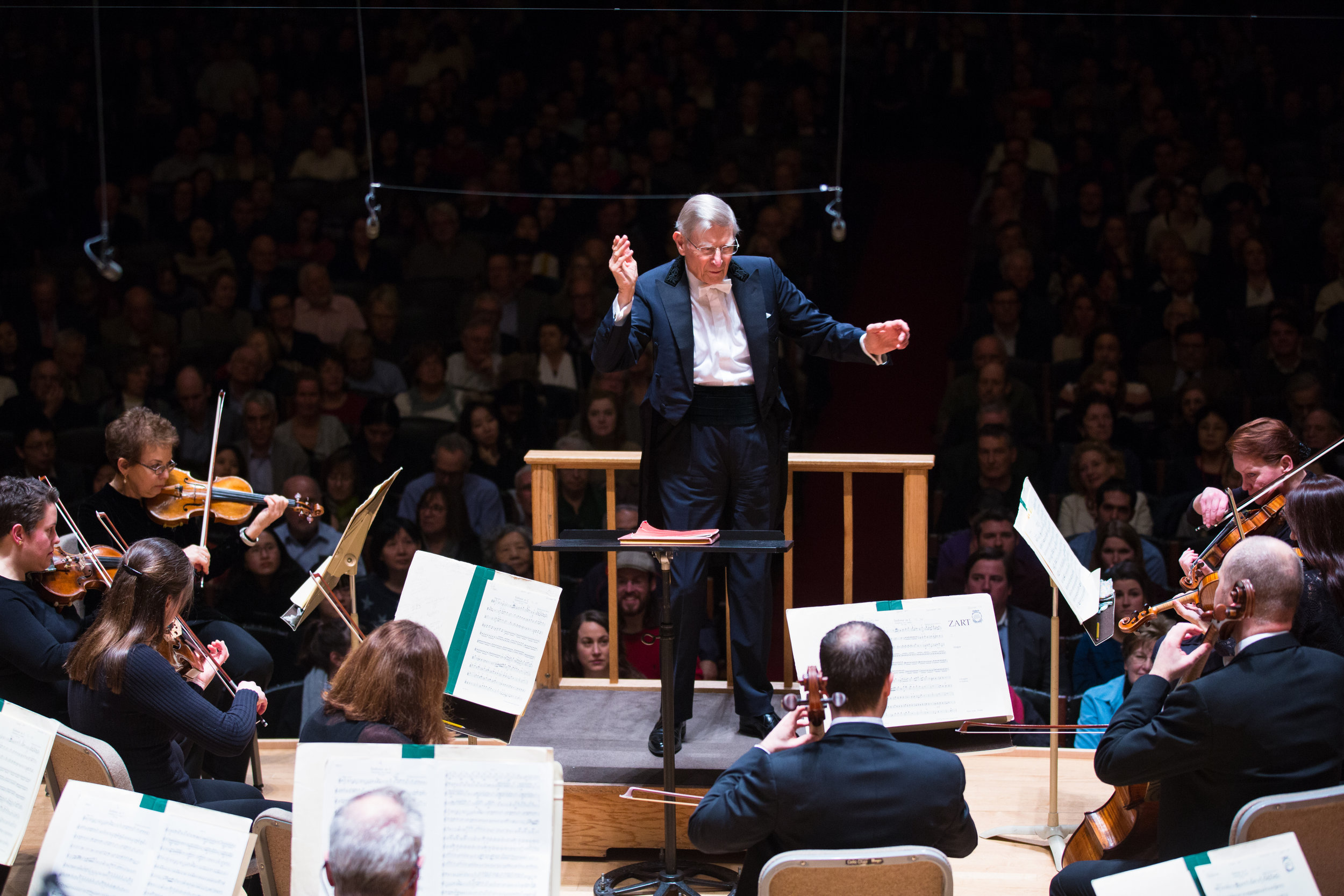Mozart two ways: the Boston Symphony Orchestra, Herbert Blomstedt and Moritz Gnann conducting. Feb. 23, 27 at Symphony Hall
Herbert Blomstedt conducts an all-Mozart program with the Boston Symphony Orchestra, Feb. 22, 2018. Robert Torres photograph
Irresistible. The chance to see two different conductors lead the same program—a litmus test of close listening. Plus all-Mozart.
The Boston Symphony Orchestra performed C major symphonies (34, 36, 41) of Mozart this past weekend: three performances under Herbert Blomstedt, and one under assistant conductor Moritz Gnann. It was hardly the study in contrasts you might think it would be.
The basics: Blomstedt worked without a score, and without a baton. Gnann used both. Make nothing out of the presence of a score (Blomstedt kept one, closed, on the desk, perhaps as a reminder): I once asked a certain Russian conductor if he planned on using the score in performance and he said bluntly, “Yes, I can read music.” The presence or absence often has more to do with travel and rehearsal time than it has to do with familiarity. There have been great performances and bad ones with a score, and without.
As might be expected, Gnann was the more physically demonstrative, but that comes in part by being extremely tall for a conductor. Both conductors sat the orchestra with violins stage front, opposite.
Moritz Gnann debuts with the Boston Symphony Orchestra on Aug. 7, 2016. Hilary Scott photograph
Blomstedt has always conducted with physical reserve—well, “always” with the proviso that I missed the first 50 years of his career. Almost all his activity in performance takes place from the wrist to the fingertips.
Gnann does more than that, but truly not that much more. There are a few leaps and certainly many more energetic exhortations, but he is also reserved, or was at least with Mozart (he’s done predominantly Mozart with the BSO, including piano concertos with Freire and Pressler).
But that’s just physical trivia.
Both ideas of Mozart were valid and thoroughly enjoyable. Blomstedt, writ large, kept precision and elegance in the foreground. Phrasing was articulate but always within its boundaries.
Gnann had a more vigorous notion. His dynamic choices went to louder louds and softer softs, but he also left many of the choices to the players themselves. It seemed not just wise, but appropriate: they playing three Mozart symphonies that they had played dozens of times before, and it was the end of a four-performance run as well, after three doses of Blomstedt. No need to over-conduct.
Mozart certainly allows these broad differences. There’s no need to include the fact that Blomstedt is 90, and Gnann is not. Although I love the anecdote that “Mozart is too easy to play when you’re young, and too hard to play when you’re old,” that rarely seems to hold up in performance. Mozart offers possibilities, for all.
As for close listening: one thing that seemed certain was the emphasis on the backstage duets in the Prague Symphony, between the basses and the horns/winds. There are countless things to follow when listening to the later Mozart symphonies, and this is one delicious aspect. The strings are engaged in all sort of activity—this is in the finale, just before the fugue-like cadence—but behind them, the low strings and the horns are having their own conversation. For Gnann, it was a point of emphasis. For Blomstedt, it was just another aspect of Mozart’s brilliance.
The next BSO performances, March 1-3, feature conductor Alan Gilbert and violinist Leila Josefowicz, in a program highlighted by John Adams “Scheherazade.2.” bso.org; 617-266-1200.






